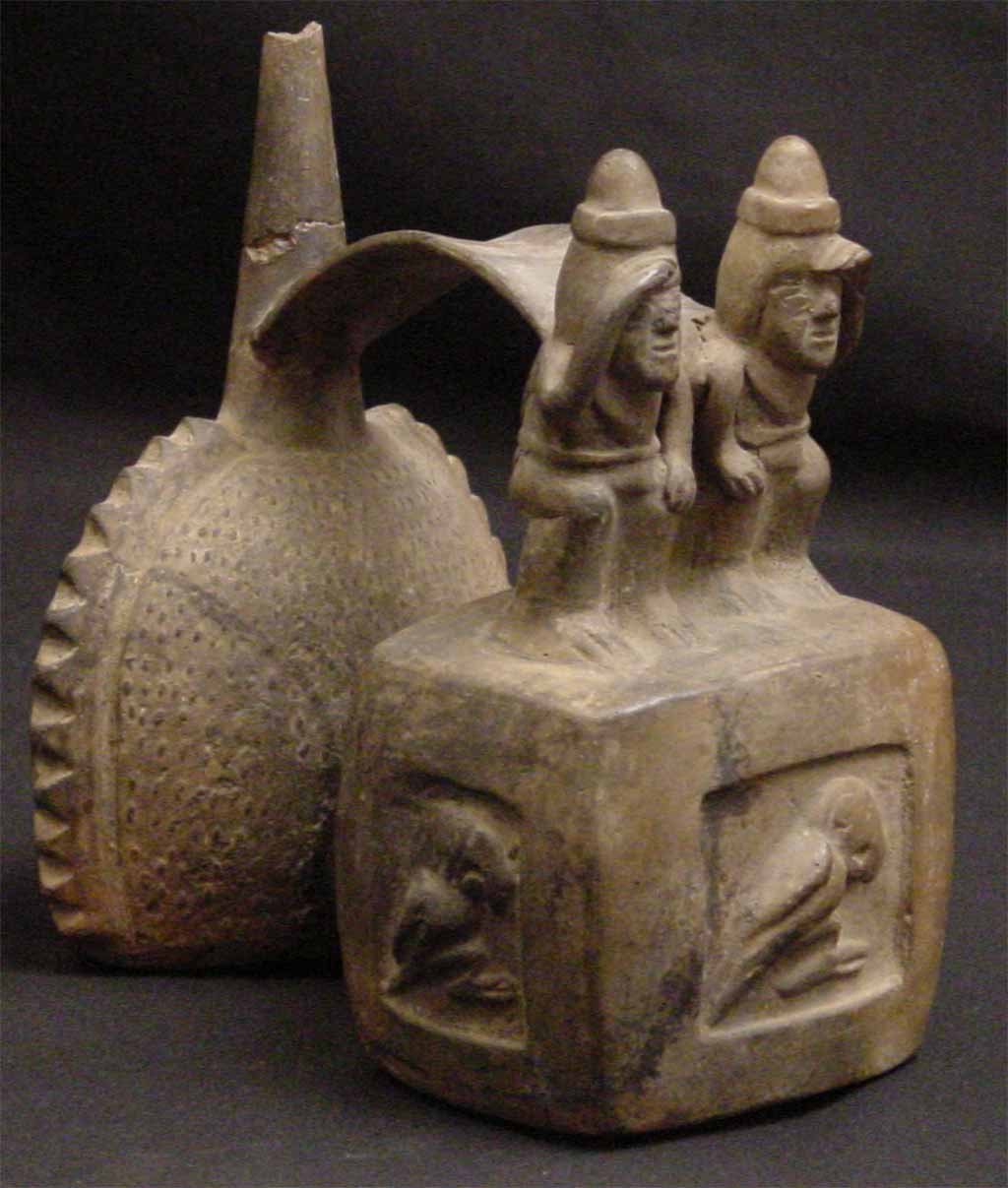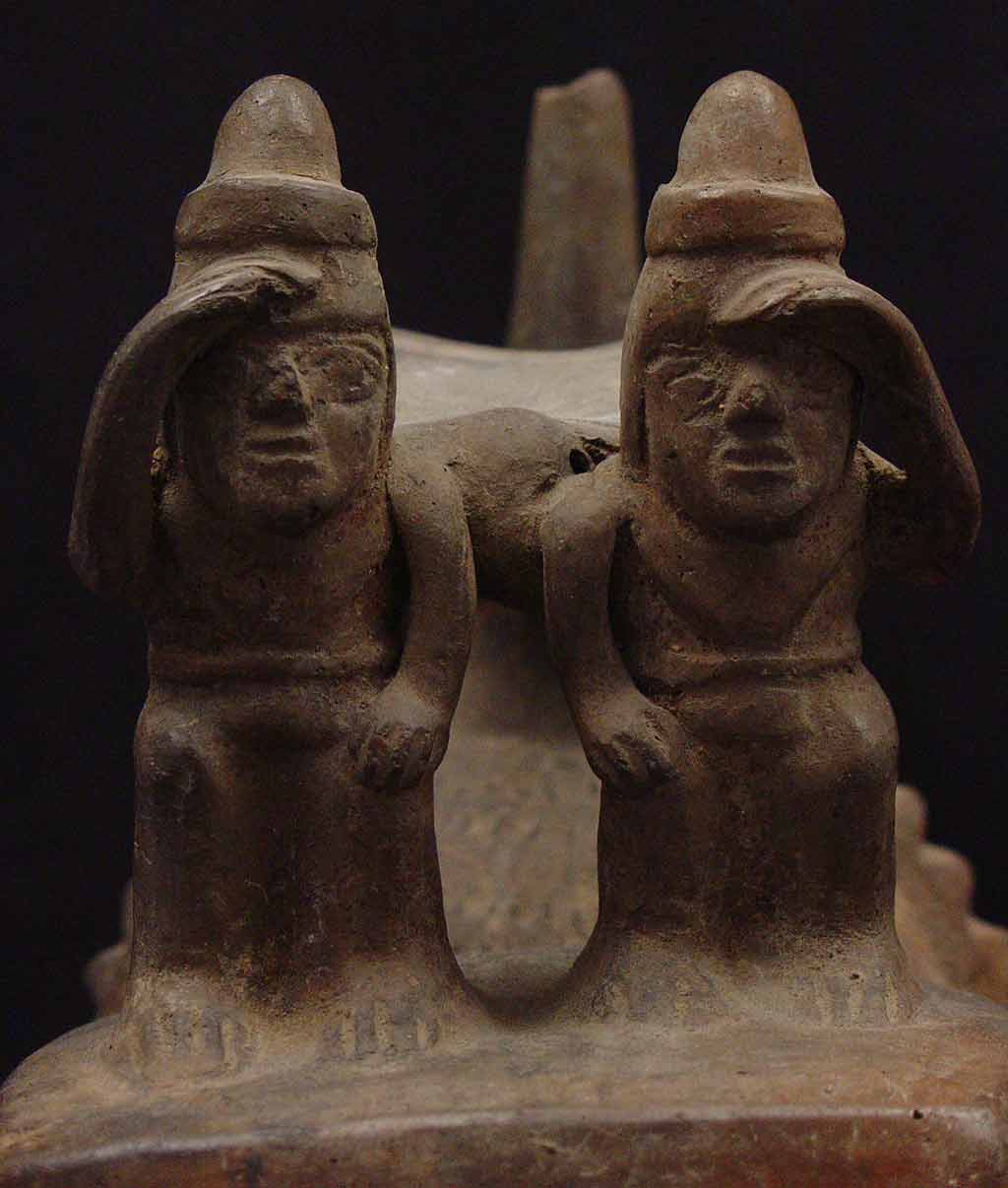
Featured Object: Chimu Whistling Vessel
- Post Date: 11/17/2016
- Author: Rachel Anderson
- Reading Time: 2 minute read
This hand-built, double-chambered whistling vessel comes from the Chimu culture located along the northern coast of Peru in the late intermediate period of South America (1000–1475). The Chimu civilization dominated this era and, with its many skilled artisans, fabricated many beautiful ceramic pieces, particularly double-chambered vessels like this one. Most of the Chimu vessels are a grayish brown color with decorative figures in various positions across the body. These were usually crafted for 2 primary functions: ceremonial, such as offerings to the gods or burials, and everyday, such as food storage.
Whistling vessels are constructed with 2 spouts, one working and one “blind.” The blind spout is generally more decorated and often features deities, animal heads, or humans. To use the vessel, liquid is poured into the working spout. The chamber is then tipped, forcing the liquid into the bowl under the blind spout. As air is blown into the working spout, air is also forced out of a hole behind the blind spout, producing a whistling sound. The level of water impacts the pitch of the tones produced and is changed by tilting the vessel at different angles. Hear the bird-like sounds produced by whistling vessels in Harvard’s Peabody Museum here.
The Spurlock vessel has 2 male figures along the blind spout. A curved bridge piece is set on their shoulders and attaches the blind spout to the mouthpiece. On the front sides of the back chamber are 3 carvings of birds. In Chimu culture, the moon was a great deity and birds and other animals were often sacrificed to the moon. The front of the vessel has a border and speckled texture design. The aesthetic refinement of this piece indicates it was likely used for ceremonial purposes.
-
- Share: 𝕏
- Subscribe to Newletter
- Giving

